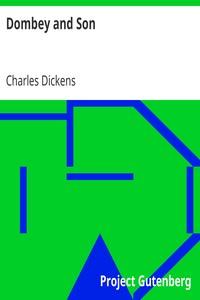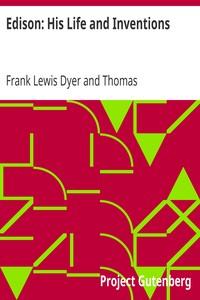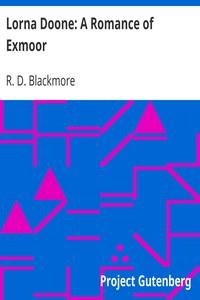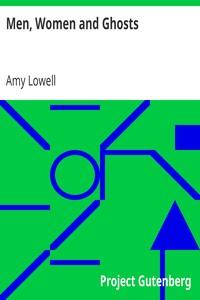Read this ebook for free! No credit card needed, absolutely nothing to pay.
Words: 19797 in 4 pages
This is an ebook sharing website. You can read the uploaded ebooks for free here. No credit cards needed, nothing to pay. If you want to own a digital copy of the ebook, or want to read offline with your favorite ebook-reader, then you can choose to buy and download the ebook.


: The Life of St. Declan of Ardmore by Power P Patrick Translator - Declan Saint Bishop of Ardmore active 6th century Legends
Translator: P. Power
LIFE OF ST. DECLAN OF ARDMORE
University College, Cork.
INTRODUCTION
"If thou hast the right, O Erin, to a champion of battle to aid thee thou hast the head of a hundred thousand, Declan of Ardmore" .
Five miles or less to the east of Youghal Harbour, on the southern Irish coast, a short, rocky and rather elevated promontory juts, with a south-easterly trend, into the ocean . Maps and admiralty charts call it Ram Head, but the real name is Ceann-a-Rama and popularly it is often styled Ardmore Head. The material of this inhospitable coast is a hard metamorphic schist which bids defiance to time and weather. Landwards the shore curves in clay cliffs to the north-east, leaving, between it and the iron headland beyond, a shallow exposed bay wherein many a proud ship has met her doom. Nestling at the north side of the headland and sheltered by the latter from Atlantic storms stands one of the most remarkable groups of ancient ecclesiastical remains in Ireland--all that has survived of St. Declan's holy city of Ardmore. This embraces a beautiful and perfect round tower, a singularly interesting ruined church commonly called the cathedral, the ruins of a second church beside a holy well, a primitive oratory, a couple of ogham inscribed pillar stones, &c., &c.
No Irish saint perhaps has so strong a local hold as Declan or has left so abiding a popular memory. Nevertheless his period is one of the great disputed questions of early Irish history. According to the express testimony of his Life, corroborated by testimony of the Lives of SS. Ailbhe and Ciaran, he preceded St. Patrick in the Irish mission and was a co-temporary of the national apostle. Objection, exception or opposition to the theory of Declan's early period is based less on any inherent improbability in the theory itself than on contradictions and inconsistencies in the Life. Beyond any doubt the Life does actually contradict itself; it makes Declan a cotemporary of Patrick in the fifth century and a cotemporary likewise of St. David a century later. In any attempted solution of the difficulty involved it may be helpful to remember a special motive likely to animate a tribal histrographer, scil.:--the family relationship, if we may so call it, of the two saints; David was bishop of the Deisi colony in Wales as Declan was bishop of their kinsmen of southern Ireland. It was very probably part of the writer's purpose to call attention to the links of kindred which bound the separated Deisi; witness his allusion later to the alleged visit of Declan to his kinsmen of Bregia. Possibly there were several Declans, as there were scores of Colmans, Finians, &c., and hence perhaps the confusion and some of the apparent inconsistencies. There was certainly a second Declan, a disciple of St. Virgilius, to whom the latter committed care of a church in Austria where he died towards close of eighth century. Again we find mention of a St. Declan who was a foster son of Mogue of Ferns, and so on. It is too much, as Delehaye remarks, to expect the populace to distinguish between namesakes. Great men are so rare! Is it likely there should have lived two saints of the same name in the same country!
The latest commentators on the question of St. Declan's period--and they happen to be amongst the most weighty--argue strongly in favour of the pre-Patrician mission . Discussing the way in which letters first reached our distant island of the west and the causes which led to the proficiency of sixth-century Ireland in classical learning Zimmer and Meyer contend that the seeds of that literary culture, which flourished in Ireland of the sixth century, had been sown therein in the first and second decades of the preceding century by Gaulish scholars who had fled from their own country owing to invasion of the latter by Goths and other barbarians. The fact that these scholars, who were mostly Christians, sought asylum in Ireland indicates that Christianity had already penetrated thither, or at any rate that it was known and tolerated there. Dr. Meyer answers the objection that if so large and so important an invasion of scholars took place we ought have some reference to the fact in the Irish annals. The annals, he replies, are of local origin and they rarely refer in their oldest parts to national events: moreover they are very meagre in their information about the fifth century. One Irish reference to the Gaulish scholars is, however, adduced in corroboration; it occurs in that well known passage in St. Patrick's "Confessio" where the saint cries out against certain "rhetoricians" in Ireland who were hostile to him and pagan,--"You rhetoricians who do not know the Lord, hear and search Who it was that called me up, fool though I be, from the midst of those who think themselves wise and skilled in the law and mighty orators and powerful in everything." Who were these "rhetorici" that have made this passage so difficult for commentators and have caused so various constructions to be put upon it? It is clear, the professor maintains, that the reference is to pagan rhetors from Gaul whose arrogant presumption, founded on their learning, made them regard with disdain the comparatively illiterate apostle of the Scots. Everyone is familiar with the classic passage of Tacitus wherein he alludes to the harbours of Ireland as being more familiar to continental mariners than those of Britain. We have references moreover to refugee Christians who fled to Ireland from the persecutions of Diocletian more than a century before St. Patrick's day; in addition it is abundantly evident that many Irishmen--Christians like Celestius the lieutenant of Pelagius, and possibly Pelagius himself, amongst them--had risen to distinction or notoriety abroad before middle of the fifth century.
Possibly the best way to present the question of Declan's age is to put in tabulated form the arguments of the pre-Patrician advocates against the counter contentions of those who claim that Declan's period is later than Patrick's:--
For the Pre-Patrician Mission. Against Theory of Early Fifth Century period.
In this matter and at this hour it is hardly worth appealing to the authority of Lanigan and the scholars of the past. Much evidence not available in Lanigan's day is now at the service of scholars. We are to look rather at the reasoning of Colgan, Ussher, and Lanigan than to the mere weight of their names.
Referring in order to our tabulated grounds of argument, pro and con, and taking the pro arguments first, we may discard as evidence for our purpose the Life of St. Ibar which is very fragmentary and otherwise a rather unsatisfactory document. The Lives of Ailbhe, Ciaran, and Declan are however mutually corroborative and consistent. The Roman visit and the alleged tutelage under Hilarius are probably embellishments; they look like inventions to explain something and they may contain more than a kernel of truth. At any rate they are matters requiring further investigation and elucidation. In this connection it may be useful to recall that the Life of St. Ciaran has been attributed by Colgan to Evinus the disciple and panegyrist of St. Patrick.
Free books android app tbrJar TBR JAR Read Free books online gutenberg
More posts by @FreeBooks

: Dombey and Son by Dickens Charles - England Fiction; Dysfunctional families Fiction; Domestic fiction; Fathers and daughters Fiction; Businesspeople Fiction; Family-owned business enterprises Fiction


: Edison: His Life and Inventions by Dyer Frank Lewis Martin Thomas Commerford - Edison Thomas A. (Thomas Alva) 1847-1931; Inventors United States Biography






